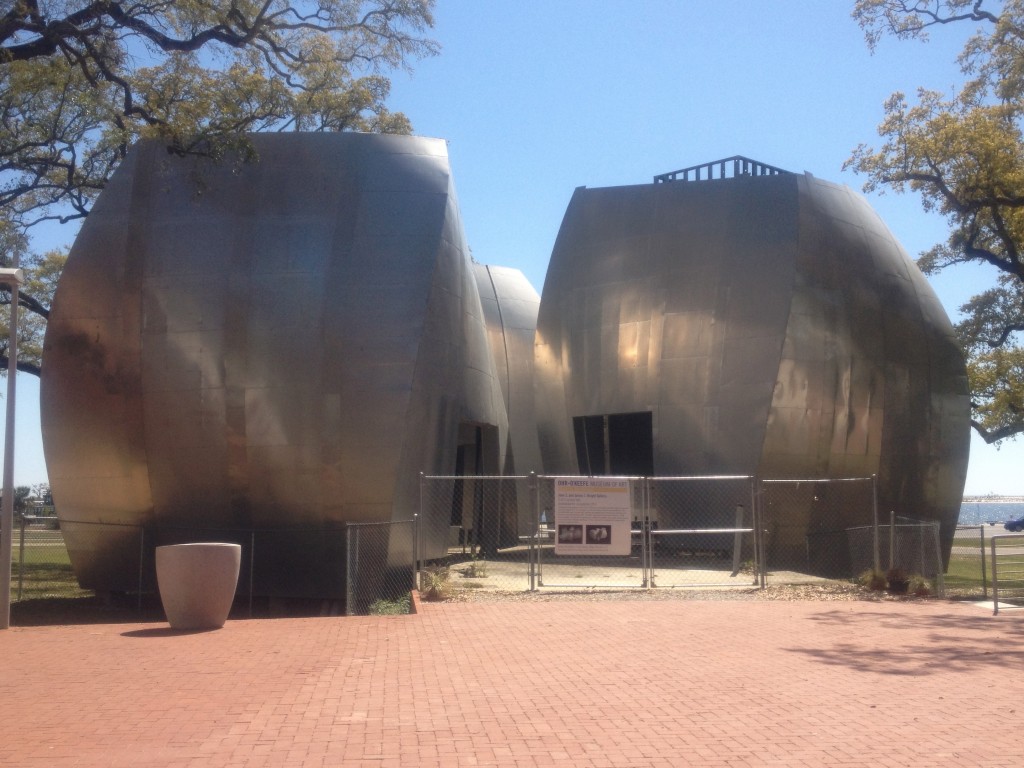
These buildings looked like bongo drums to me. This particular part of the museum wasn’t quite open yet.
During our week in Biloxi this past March, Dave and I took a drive to Ocean Springs, which has done a fantastic job of rebuilding after Katrina’s devastation.
On the drive, we passed the most unusual-looking buildings near the Isle and Palace Casinos. There were three buildings in a row up against U.S. 90, each of which had very distinctive architecture.
The sign along the highway read “Ohr-O’Keefe Museum“…about which I immediately assumed was a museum featuring America’s most famous O’Keeffe. But I was wrong.
While Dave was recovering from his eye surgery, I took a couple hours and paid a visit to the museum. Despite its unusual appearance, inside those buildings was some beautiful art!
The artist featured here is George E. Ohr, a Biloxi native who operated a very eccentric pottery shop. His standard pottery pieces began to take on some very wild appearances over the years. A large Ohr pottery collection is a permanent exhibit at the museum.
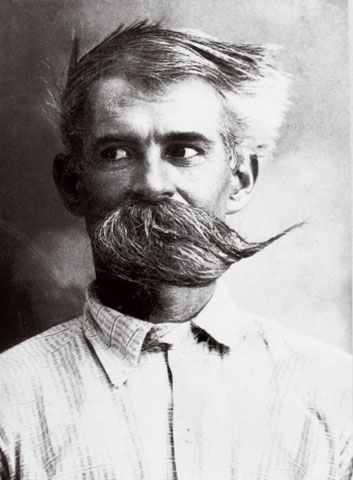
George Ohr was known for his wild mustache, and the sticker you receive with paid admission (to show that you’re a paid visitor) is of a giant mustache.
The “campus” to the Ohr-O’Keefe actually consists of five buildings total. You can read more about the architecture here, but I was intrigued by the modernist version of an antebellum “Shoo-Fly” to which one of the buildings was supposed to pay homage.
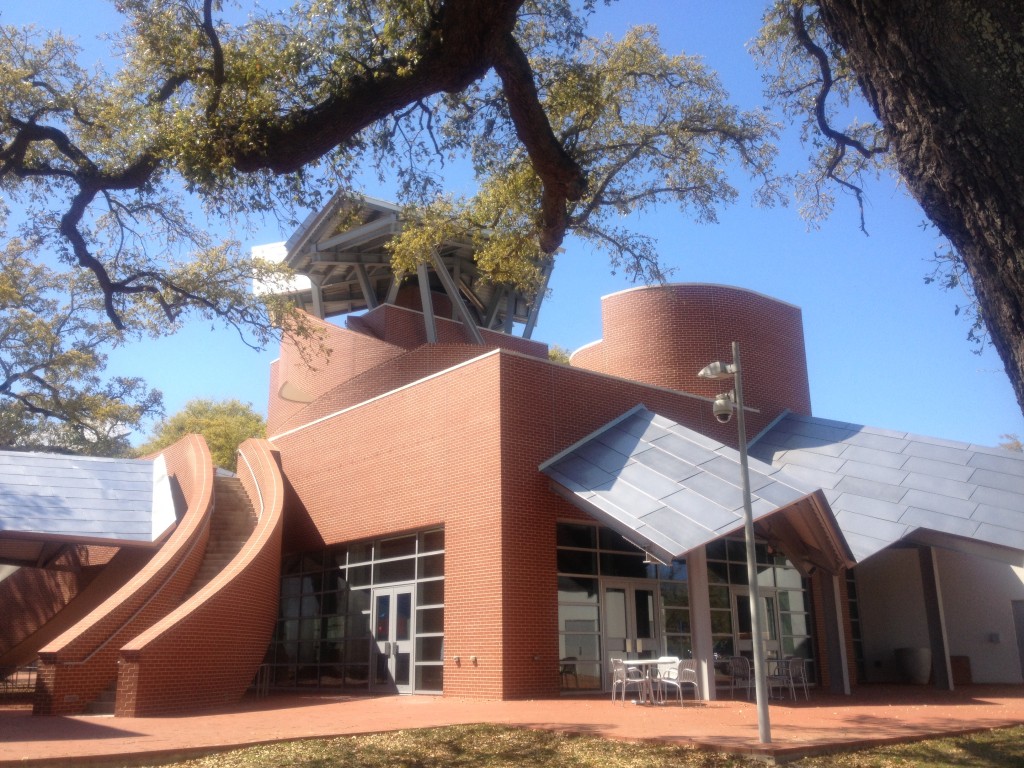
The roof of this building was supposed to be a “shoo fly” porch. If you read about the history of a shoo fly, you’ll shake your head too.
The five buildings provide numerous gallery spaces of assorted sizes. I had the opportunity to see four different artists’ exhibits. All of the exhibits had local connections, whether it was the artists’ hailing from Biloxi, or in one case, the medium was wood scavenged from Hurricane Katrina debris.
In addition to the exhibits, one of the buildings is the City of Biloxi Center for Ceramics. A fully operational ceramics workshop was in use when I was there, with artists actively throwing on the pottery wheels.
A very non-moderist building stands on the campus. It’s the Pleasant Reed Interpretive Center, which features local African-American historical artifacts. The original building was destroyed by Hurricane Katrina, but has been rebuilt completely, thanks to numerous archives and photographs.
The Ohr-O’Keefe Museum of Art is about a 60-90 minute visit, admission is $8-10 per person and is on U.S. 90 just west of the bridge between Biloxi and Ocean Springs.



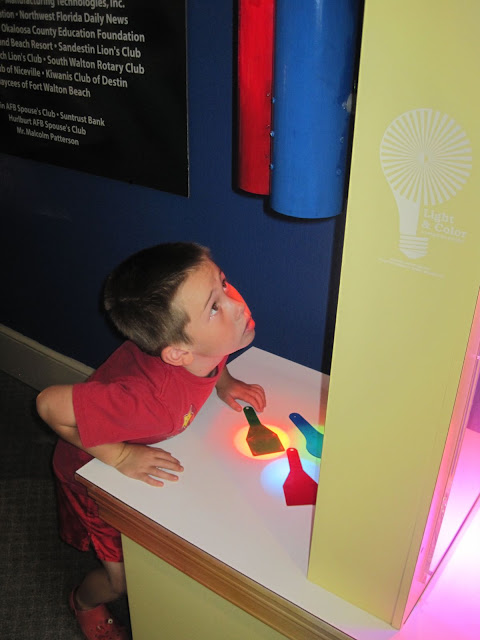
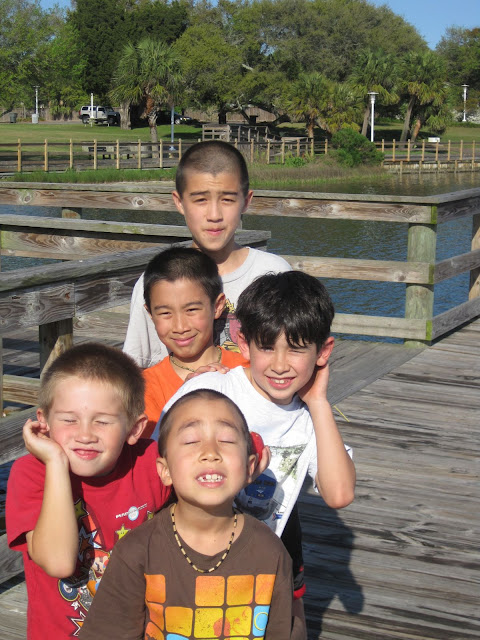
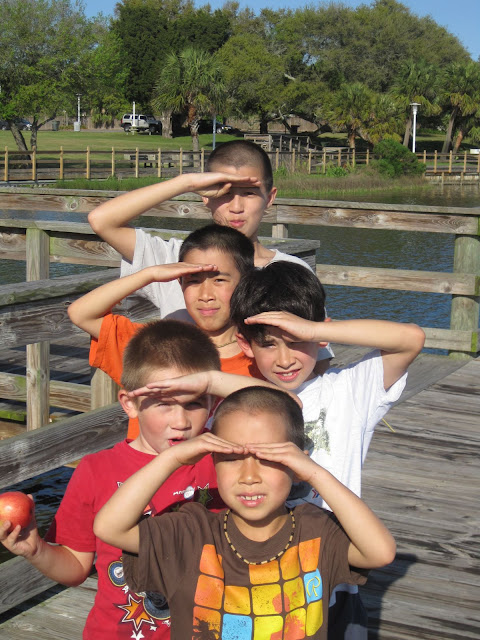

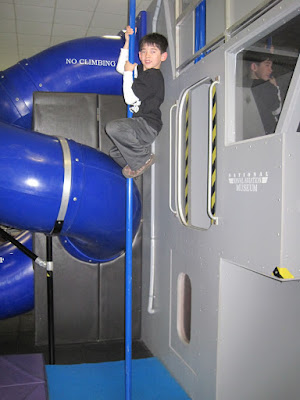


Recent Comments